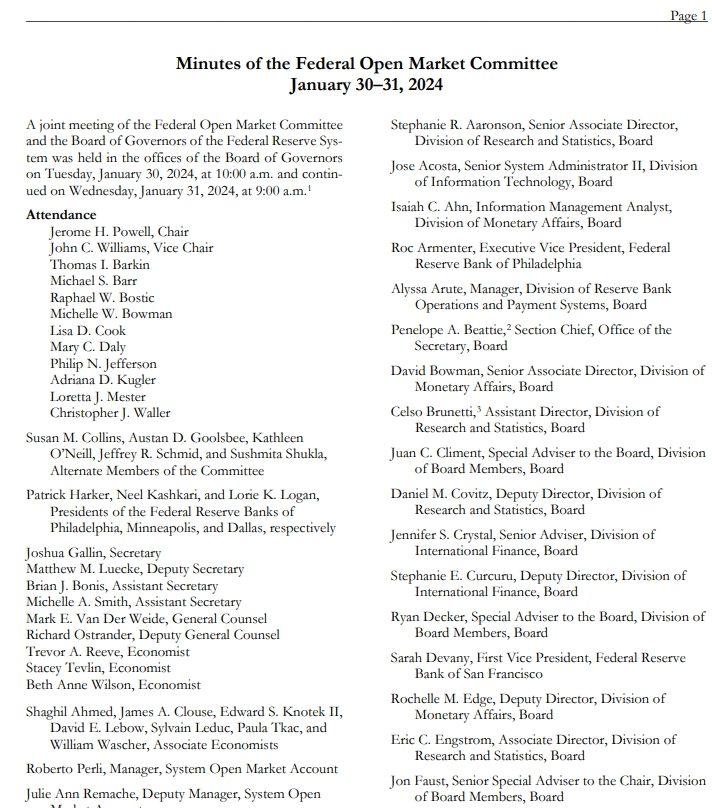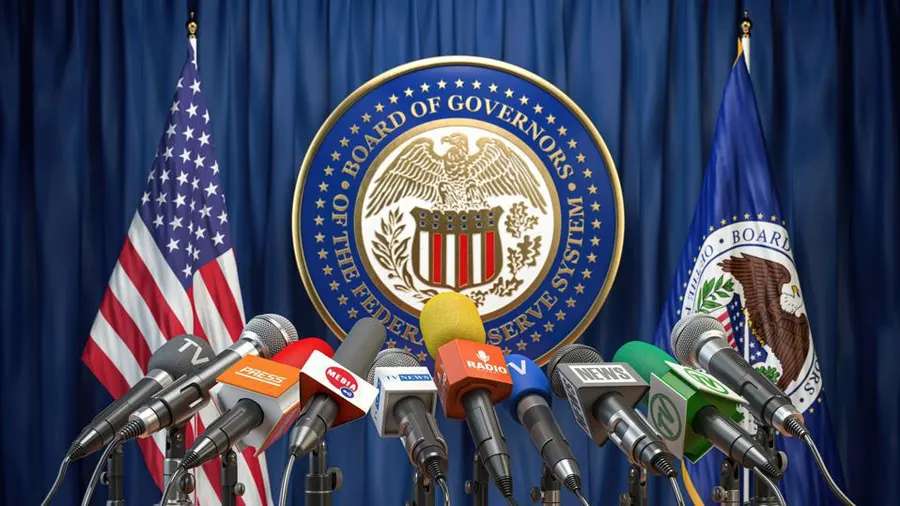Federal Reserve July Meeting Minutes: The Horn for Rate Cuts Has Already Blown
The document also suggests that the possibility of the Federal Reserve cutting interest rates in September has become increasingly likely.
This may be the last set of meeting minutes released before the Fed cuts interest rates.
On August 21, the Federal Reserve released the minutes from the end of July meeting. The document showed that Fed officials were "extremely close" to the long-awaited rate cut at the meeting but stopped short. At the same time, the document also implied that the possibility of the Fed cutting rates in September is becoming increasingly likely.

The document stated: "The vast majority of participants believe that if the data continues to be in line with expectations, it may be appropriate to ease policy at the next meeting." The information revealed by the Fed is consistent with market views, and related interest rate futures pricing shows that the probability of the Fed cutting rates in September is as high as 100%.
The document also stated: "A few participants believed that the recent progress in inflation and rising unemployment rates provided a reasonable justification for lowering the target range by 25 basis points at this meeting, or they could have supported such a decision." Officials said they were confident in the direction of inflation and willing to start easing monetary policy as long as the data continued to cooperate.
However, some officials remain cautious. Although inflation indicators have shown a significant easing of price pressures, some members are still concerned about the U.S. labor market and the difficulties faced by families, especially low-income families, in the current environment, which may reduce their tolerance for inflation.
The minutes pointed out: "Regarding the inflation outlook, participants believe that recent data has strengthened their confidence that inflation is moving sustainably towards 2%." At the same time, almost all participants believe that the factors leading to recent deflation may continue to exert downward pressure on inflation in the coming months.
As for the labor market, many officials have been able to recognize clearly: "The reported wage growth may have been exaggerated."
The minutes wrote that most participants said that the risk to the Fed's goal of full employment has increased, while many participants said that the risk to the inflation target has decreased. Some policymakers warned that the labor market may face the risk of serious deterioration, some people are alert that cutting rates too late or not enough may hit the economy and employment, while others believe that cutting rates too early or too much may cause inflation to rise from falling.
Earlier yesterday, according to the U.S. Bureau of Labor Statistics' revised report on non-farm employment from April 2023 to March 2024, the number of non-farm jobs in the United States during the reporting period may have been exaggerated by as much as 800,000 people. What's worse, the revised non-farm employment report for July showed that only 114,000 jobs were created, and the unemployment rate rose again to 4.3%.
For this data, the Wall Street consensus is that the U.S. labor market is not as strong as imagined, and the cooling of the job market may take longer or last longer, and the data may also affect the tone of Fed Chairman Powell's speech at the Jackson Hole Global Central Bank Annual Meeting on Friday.
Interestingly, in the face of such a large downward revision report, yesterday's U.S. stock market seemed somewhat "indifferent." The three major U.S. stock indexes all closed higher, with the S&P 500 up 0.42%, the Dow Jones up 0.14%, and the small-cap and chip stock indexes in the U.S. stock market up more than 1%. U.S. Treasury yields continued to fall, with the two-year yield falling nearly 11 basis points.
The analysis said that the market's indifferent reaction was mainly due to two reasons. First, the market had already made a psychological expectation for this, with predictions ranging from 350,000 to 1 million, and Goldman Sachs expected the highest downward revision could reach 1 million people; second, the data statistics time range from April 2023 to March 2024 has a lag, and what the market is mainly worried about is the weak employment since the second quarter of this year.
The Fed's next interest rate meeting will be held from September 17 to 18. From the current attitude and economic data, the horn for cutting interest rates has already sounded.

·Original
Disclaimer: The views in this article are from the original Creator and do not represent the views or position of Hawk Insight. The content of the article is for reference, communication and learning only, and does not constitute investment advice. If it involves copyright issues, please contact us for deletion.